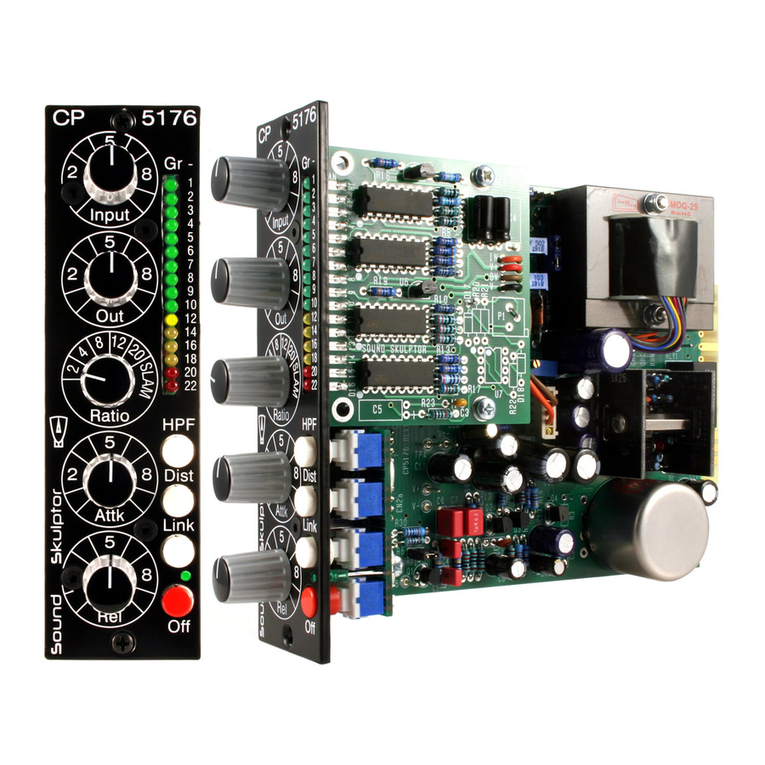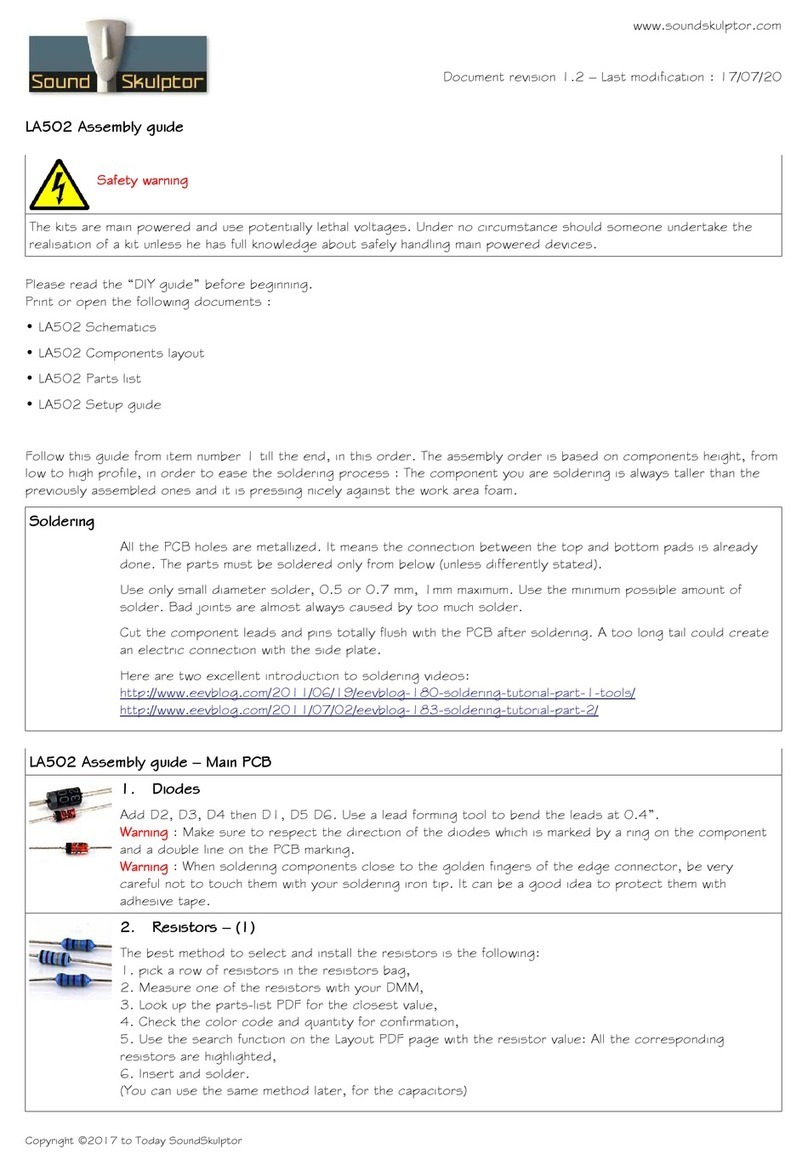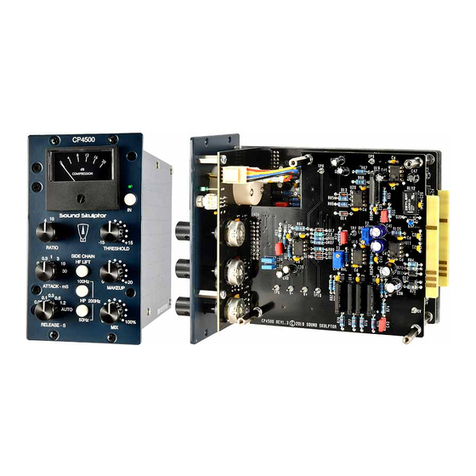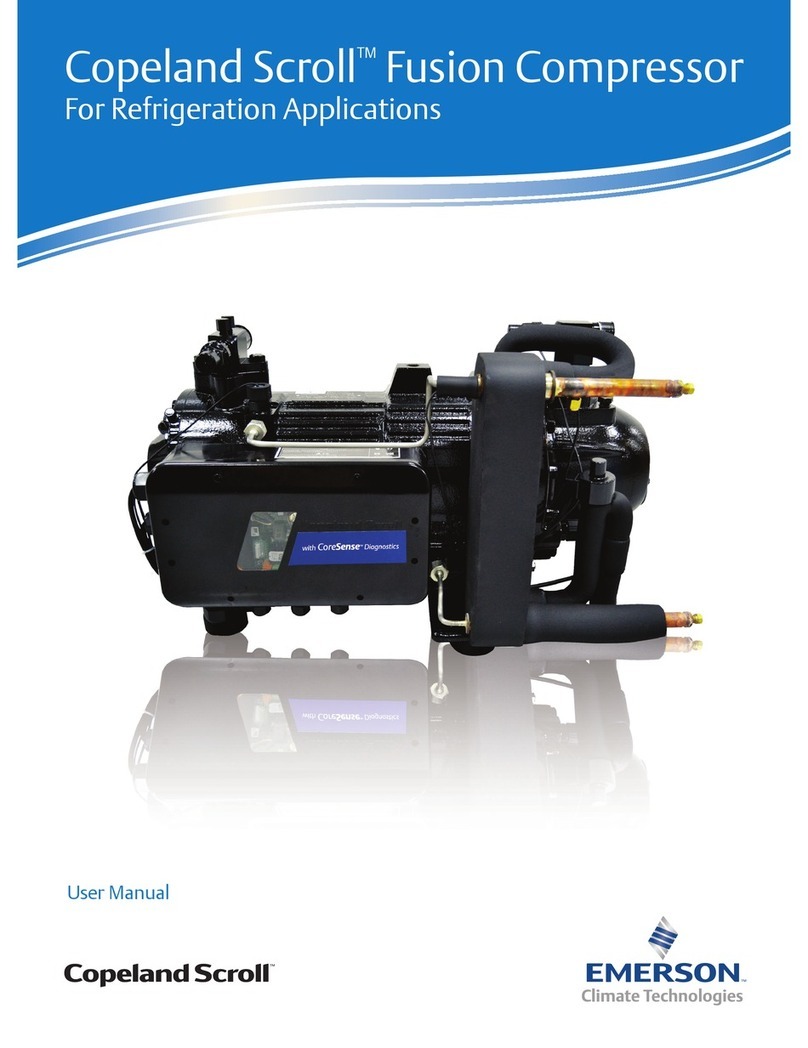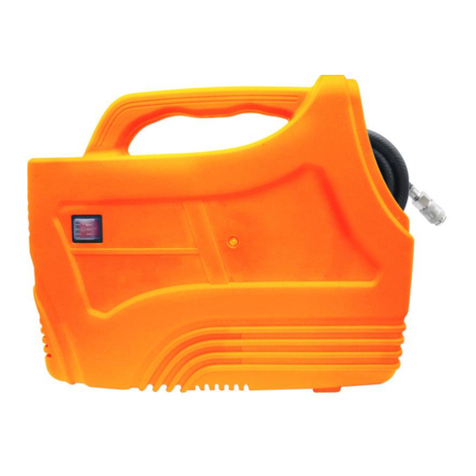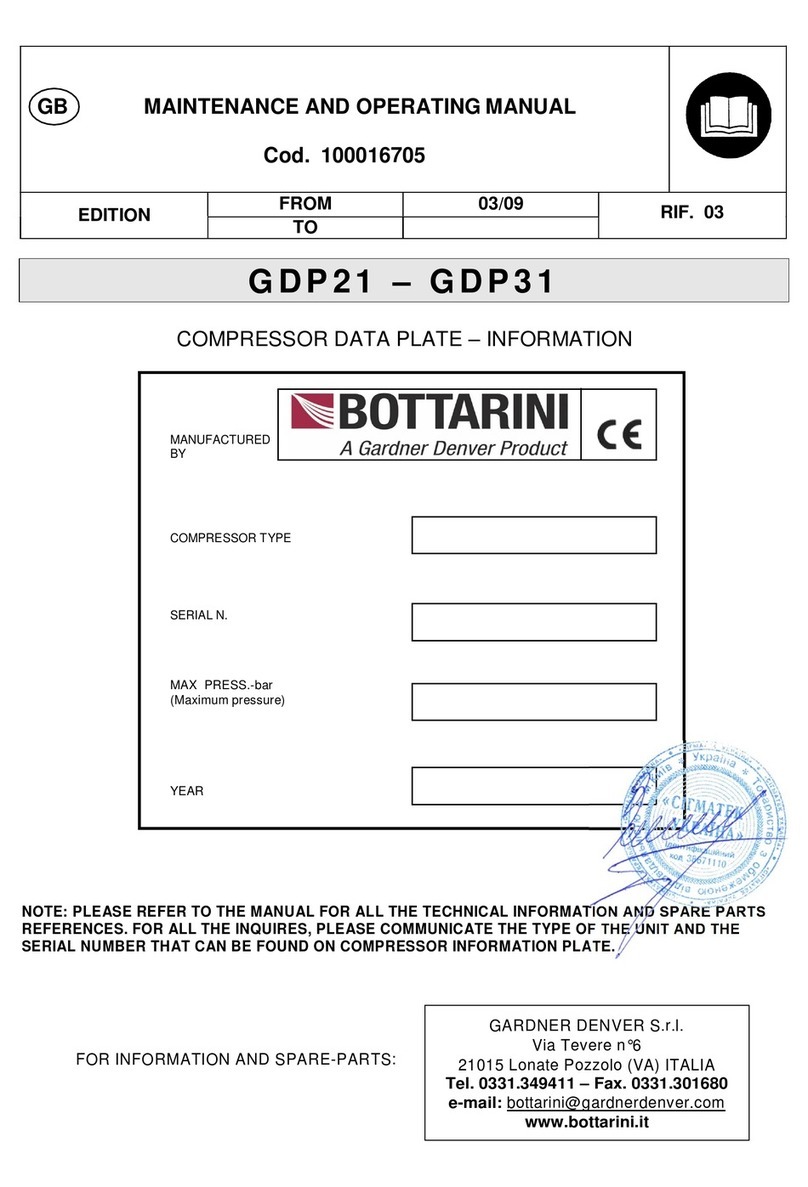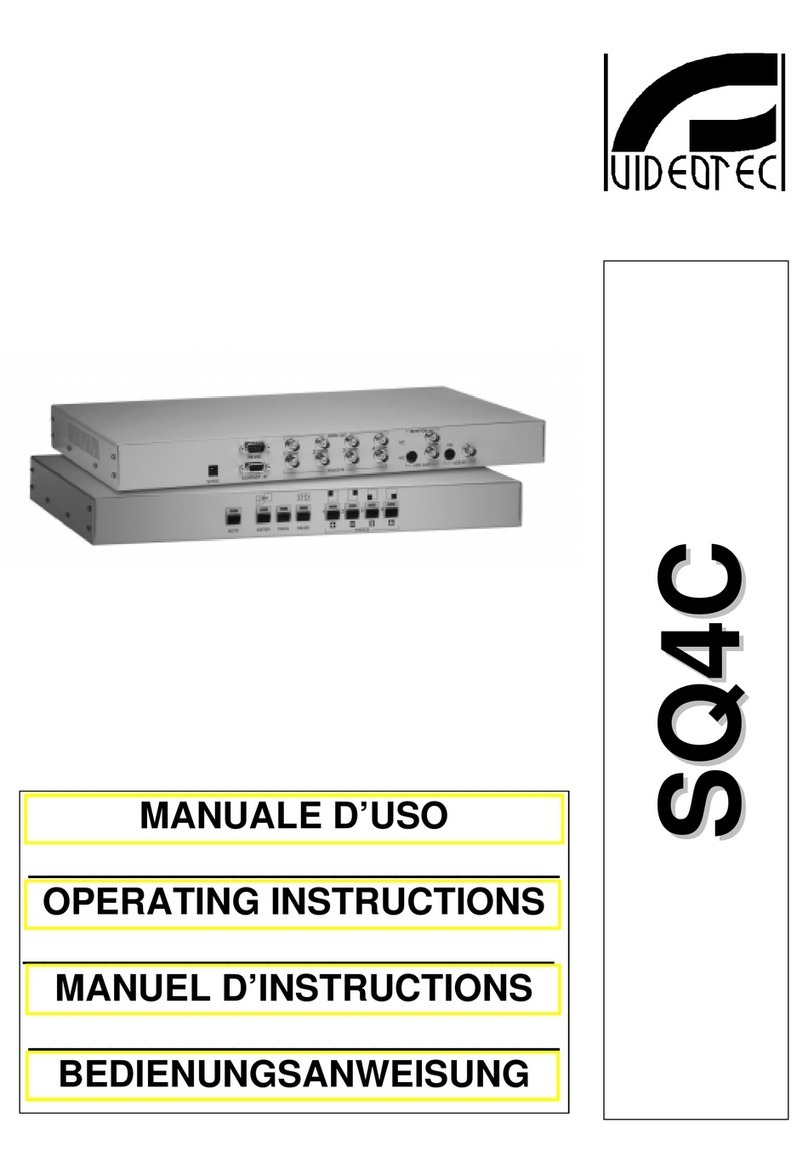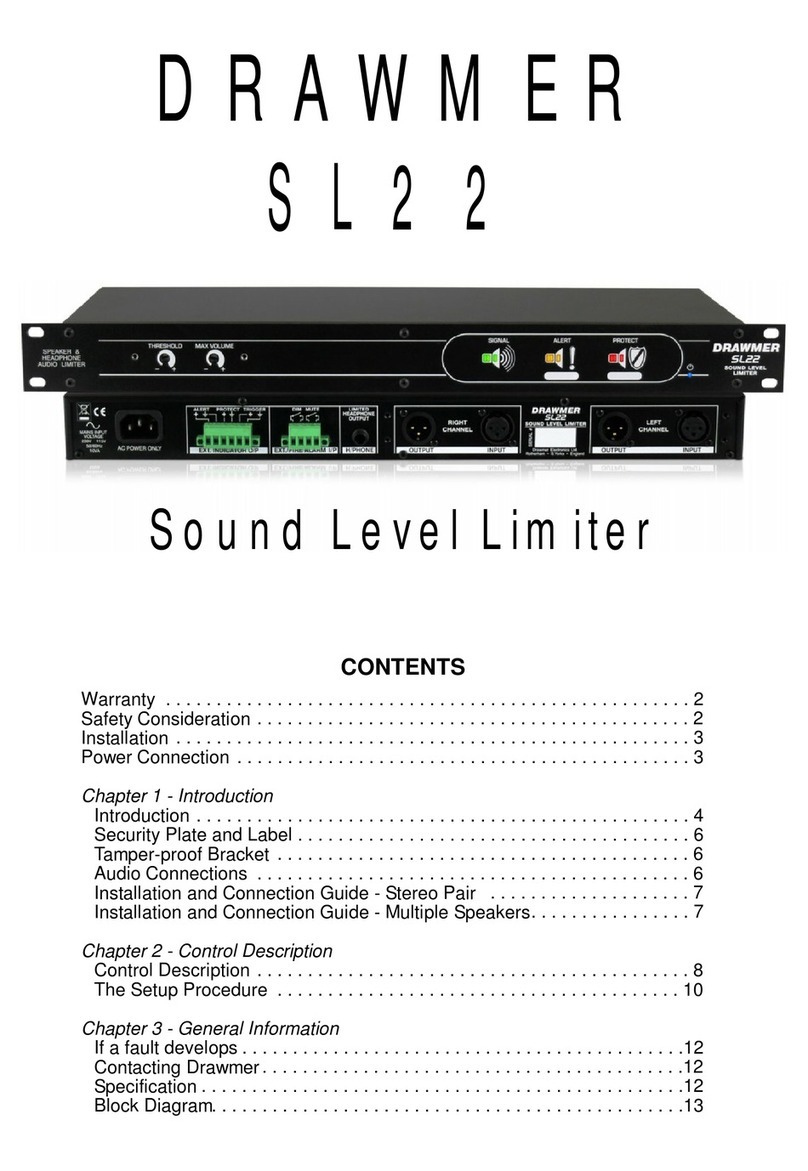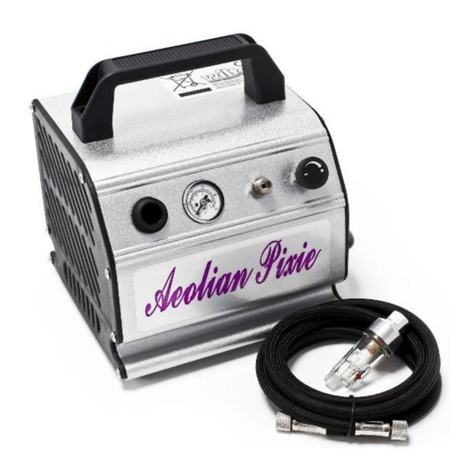Sound Skulptor CP5176 User manual

www.soundskulptor.com
Document revision 2.1 – Last modification : 12/11/17
CP517 Assembly guide
Safety warning
The kits are main powered and use potentially lethal voltages. Under no circumstance should someone undertake the
realisation of a kit unless he has full knowledge about safely handling main powered devices.
Please read the “DIY guide” before beginning.
Print or open the following documents :
• CP517 Schematics
• CP517 Components layout
• CP517 Parts list
• CP517 Setup guide
Follow this guide from item number 1 till the end, in this order. The assembly order is based on components height, from
low to high profile, in order to ease the soldering process : The component you are soldering is always taller than the
previously assembled ones and it is pressing nicely against the work area foam.
Soldering
All the PCB holes are metallized. It means the connection between the top and bottom pads is already
done. The parts must be soldered only from below (unless differently stated).
Use only small diameter solder, 0.5 or 0.7 mm, 1mm maximum. Use the minimum possible amount of
solder. Bad joints are almost always caused by too much solder.
Cut the component leads and pins totally flush with the PCB after soldering. A too long tail could create
an electric connection with the side plate.
Here are two excellent introduction to soldering videos:
http://www.eevblog.com/2011/0 /19/eevblog-180-soldering-tutorial-part-1-tools/
http://www.eevblog.com/2011/07/02/eevblog-183-soldering-tutorial-part-2/
CP517 Assembly guide – Main PCB
1. PCB split
Split the second PCB along the groove. Use extra
thin sandpaper to clean up all the rough sides.
Copyright ©2013 to Today SoundSkulptor

www.soundskulptor.com
Document revision 2.1 – Last modification : 12/11/17
CP517 Assembly guide – Main PCB
2. PCB to PCB connectors
Insert the female 2x10 connectors on the male
parts and position them on the solder side of the
main PCB. Use the second PCB to create a flat
continuous surface. The female connectors must sit
flat on the second PCB. Solder one or two pins
from this side. Then turn the PCB over and solder the other pins from the components side.
Warning : The connectors are installed
on the solder side
of the PCB (the side without writings).
3. DOA Pin Sockets
Solder the 7 pin sockets for the DOA. Solder one at a time. Insert
one socket, turn over the PCB and press against a solid but flexible
surface like cork or dense foam then solder. The correct positioning
of the sockets is very important for easy insertion of the DOA.
4. Diodes
Add D1, D4 to D8. Use a lead forming tool to bend the leads at 0.4”.
Warning : Make sure to respect the direction of the diodes which is marked by a ring on the component
and a double line on the PCB marking.
5. Resistors – (1)
The best method to select and install the resistors is the following:
1. pick a row of resistors in the resistors bag,
2. Measure one of the resistors with your DMM,
3. Look up the parts-list PDF for the closest value,
4. Check the colour code and quantity for confirmation,
5. Use the search function on the Layout PDF page with the resistor value or reference: the
corresponding resistors are highlighted,
. Insert and solder.
(You can use the same method later, for the capacitors)
. Resistors - (2)
Add R1 to R27, R33 to R35, R40 to R 2.
Control the resistor values with a digital multimeter. Bend the leads at 0.4” with a lead forming tool.,
except for R23 which is bent at à 0. ”.
Warning : It is very important to check the resistors value with a DMM because the colour code can be
ambiguous. For example 1K (brown-black-black-brown-brown) can be confused with 110R (brown-brewn-
black-black-brown).
Warning : Resistors R45 ( K8) and R4 (1K) are 0.1% precision resistors. They must not be confused
with 1%, same value resistors. Their last colour ring is violet instead of brown.
Copyright ©2013 to Today SoundSkulptor

www.soundskulptor.com
Document revision 2.1 – Last modification : 12/11/17
CP517 Assembly guide – Main PCB
7. Ceramic capacitors
Add C10, C2 , C17, C20, C21, C22.
8. IC Sockets
Insert and solder the 14 pins sockets of UI and U2.
Warning : Make sure to respect the socket direction, marked by a notch.
9. Relay
Add RLY1. Two pins are left without solder.
Warning : Make sure to respect the direction of the relays which is marked by a white line on the
component and on the PCB marking.
10. Test pins
Solder the 10 test pins TP1 to TP7, V+, V- and 0V.
Copyright ©2013 to Today SoundSkulptor

www.soundskulptor.com
Document revision 2.1 – Last modification : 12/11/17
CP517 Assembly guide – Main PCB
11. Jumper headers
Insert the 5 pins jumper header JMP1. Solder one pin first, check verticality, then solder the other pins.
12. Transistors and regulators
Add Q1 to Q4 and U3.
Warning : Watch out the transistor direction.
13. Film capacitors
Add C1 to C4, C24, C7, C30, C5.
14. Connector
Add CN1. Solder one pin, check verticality then solder the other pins.
15. Trimmer potentiometer
Add P5, P , P7. These 3 trimmers are different from each other. Solder one pin, check verticality then
solder the other pins.
1 . Non polarized small electrolytic capacitors
Add C15, C1 .
These caps are not polarized and can be inserted in any direction.
17. Polarized small electrolytic capacitors
Add C8, C11, C23, C25, C27, C28.
Add C12, C13, C14, C29.
Add C , C9, C31, C32, C33, C34.
Warning : The +lead must go into the +hole. Do not reverse!
18. Inductor
Add L1. This inductor is installed vertically.
Copyright ©2013 to Today SoundSkulptor

www.soundskulptor.com
Document revision 2.1 – Last modification : 12/11/17
CP517 Assembly guide – Main PCB
19. Input transformer
Pin 1 on the transformer is identified by a red dot. Insert the transformer, pin 1 into hole number 1 and
solder.
Warning : Double check the pin 1 position because this transformer can be mounted backwards!
20. Output transformer
The transformer is mounted using two 25mm M3 screws inserted
from the back of the board. Two metal washers are fitted on each
screw to prevent the transformer touching the PCB. One more
washer is used before the nut to protect the lams.
Shorten the leads to the necessary length, around cm. Strip on
5mm and tin. Insert in the pad hole and bend the tinned tip flat on
the pad before soldering. Cut flush.
21. Non polarized large electrolytic
Add C18. Solder one lead first, adjust verticality then solder the second lead.
This cap is not polarized and can be inserted in any direction.
Copyright ©2013 to Today SoundSkulptor
Nut
Transformer
PCB
1 Washer
2 Washers

www.soundskulptor.com
Document revision 2.1 – Last modification : 12/11/17
CP517 Assembly guide – Main PCB
22. IC's
Insert U1 and U2 into their sockets. It is necessary to bend the pins slightly inward before inserting.
Warning: Make sure to insert the IC's in the correct direction which is identified by a notch.
23. Jumpers
Insert one jumper on JMP1 (between pins 2 & 3).
24. Gain reduction meter spacers
Insert a M3x mm screw from below PCB, add two
metal washers and the 20mm spacer.
Repeat for the second spacer.
Copyright ©2013 to Today SoundSkulptor
2 Washers
Spacer
M3x6 mm screw

www.soundskulptor.com
Document revision 2.1 – Last modification : 12/11/17
CP517 Assembly guide – Main PCB
25. Visual check
Brush the solder side with a hard tooth brush to remove any remaining solder bits.
Make a full visual check. Any missing component on the board ? Any remaining component in the box ?
When everything looks correct, proceed with the front PCB assembly.
CP517 Assembly guide – front PCB assembly
2 . Diode
Add D3. This diode is installed vertically.
Warning : Make sure to respect the direction of the diode which is marked by a ring on the component
and letter K on the PCB marking.
1. Resistors
Add R28 to R32, R3 to 39.
Control the resistor values with a digital multimeter. The resistors are installed vertically.
2. Ceramic capacitor
Add C19.
3. Connectors 2x10
Solder the two 2x10 connectors on the back of the PCB, inserted from the solder side.
4. Spacers
Attach two 15 mm spacers with two M3x mm screws, inserted from the solder side.
Copyright ©2013 to Today SoundSkulptor

www.soundskulptor.com
Document revision 2.1 – Last modification : 12/11/17
CP517 Assembly guide – front PCB assembly
5. 2mm LED
Insert the 2mm LED, taking care of the anode/cathode
position. The shortest leg (cathode) is the closest to the
PCB edge. Temporarily attach the front panel with two
M3x8 mm screws. Adjust the LED flush with the front
panel surface. Solder.
Remove the front panel and spacers.
. Push switches
Insert the push switches, flat on the PCB, in the
correct direction and solder one pin. Check again
the good position then solder the other pins.
Warning : The switch direction is given by the
digits 2 0 1, engraved on one side of the switch.
Match the digits with the ones on the PCB.
Insert the switch caps.
7. Potentiometers
Add P1, P2, P3 and P4. Insert the potentiometers into the PCB holes from the solder side, making sure
the pins fit into the corresponding PCB pads. Attach with washer and nut on the component side, tighten
firmly to ensure a perfect perpendicular position and solder.
Warning : The 4 potentiometers have different values.
8. Rotary switch
Add the positions rotary switch RSW1.
Warning : The position of the switch is critical for a good front-plate matching. The switch rests on 3
small feet that must sit perfectly flat on the PCB. Press the switch on the PCB and solder two opposed
pins. Check position then solder the other pins.
Copyright ©2013 to Today SoundSkulptor

www.soundskulptor.com
Document revision 2.1 – Last modification : 12/11/17
CP517 Assembly guide – Gain reduction meter
1. LEDs
For each one of the 1 LED's cut the short leg (cathode)
at 5mm from body and cut the long leg (anode) at mm.
Then insert the first green LED on the PCB, long leg (anode) on top. Make sure that
the leg is perfectly parallel to the pad. Solder the anode but leave the cathode free
for now. The position is still easy to adjust until both legs are soldered.
Insert and solder the next LED and repeat until the1 LEDs are in position.
Make a last visual check and correct LED's that are not perfectly lined up, then
solder the cathodes on the PCB back side.
2. Strap
Solder the strap indicated in red on the layout schematic. Use a resistor
lead that was cut previously.
3. Resistors
Add R1 to R20.
Control the resistor values with a digital multimeter. Bend the leads at 0.4” with a lead forming tool.
4. Integrated Circuits
Insert U1, U2, U3 and U4 and solder. You will need to bend the pins slightly inwards before inserting.
Warning : Make sure to respect the IC direction, marked by a semi-circular notch on the IC and a dot on
the PCB.
5. Regulator IC's
Add U5 and U . The IC's are installed flat on the PCB in order to minimize the components height.
Warning : Watch out the IC direction.
. Ceramic capacitor
Add C3. This capacitor is also installed flat on the PCB.
Copyright ©2013 to Today SoundSkulptor

www.soundskulptor.com
Document revision 2.1 – Last modification : 12/11/17
CP517 Assembly guide – Gain reduction meter
7. Electrolytic capacitors
Add C1, C2. These capacitors are installed below, on the solder side of the PCB.
Warning : C1 & C2 are soldered under the PCB, on the solder side.
Warning : The +lead must go into the +hole. Do not reverse.
8. 4 pins connector CN1
Install the 4 pins header on the solder side of the PCB. Solder one pin, check verticality then solder the
other pins.
Warning : CN1 is soldered under the PCB, on the solder side.
Warning : the connector pins must be exactly perpendicular to the PCB to allow proper insertion into the
main board.
CP517 Assembly guide – Final assembly
9. Front panel and Side plate assembly
Attach the potentiometers PCB to the
front panel with two M3x black
screws, two 15mm spacers and two
M3x screws. Check that the push
buttons move freely in the panel holes.
Attach the side plate to the front panel
with two M3x black screws.
Copyright ©2013 to Today SoundSkulptor

www.soundskulptor.com
Document revision 2.1 – Last modification : 12/11/17
CP517 Assembly guide – Final assembly
10. Main PCB assembly
Insert the main PCB connectors into the connectors of the potentiometers PCB until the main PCB holes
match the side plate standoffs.
Attach the main PCB with three M3x M3x25mm spacers and one M3x mm screw in the upper left
corner and four lock washers inserted at the base of the spacers.
11. Knobs
Attach the 5 knobs to the 5 potentiometers and switch spindles.
12. Test and setup
It is time for test and setup. Follow instructions on cp517 -setup-guide.pdf.
Copyright ©2013 to Today SoundSkulptor

www.soundskulptor.com
Document revision 2.1 – Last modification : 12/11/17
CP517 Assembly guide – Final assembly
13. Gain reduction meter assembly
Attach the GR meter on the lower spacer with
one M3x screw.
Place the 4mm spacer on the higher hole
14. Cover assembly
Place the cover on top of the compressor. Attach with 3 M3x mm countersunk screws plus one
M3x12mm in the hole corresponding to the 4mm spacer.
15. Congratulations !
You're done !
Copyright ©2013 to Today SoundSkulptor
Other manuals for CP5176
1
Table of contents
Other Sound Skulptor Compressor manuals
Popular Compressor manuals by other brands

Challenge Xtreme
Challenge Xtreme CX 1500/1 operating instructions
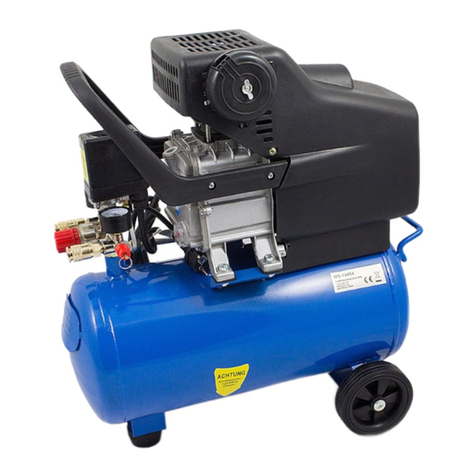
WilTec
WilTec 24 L Operation manual
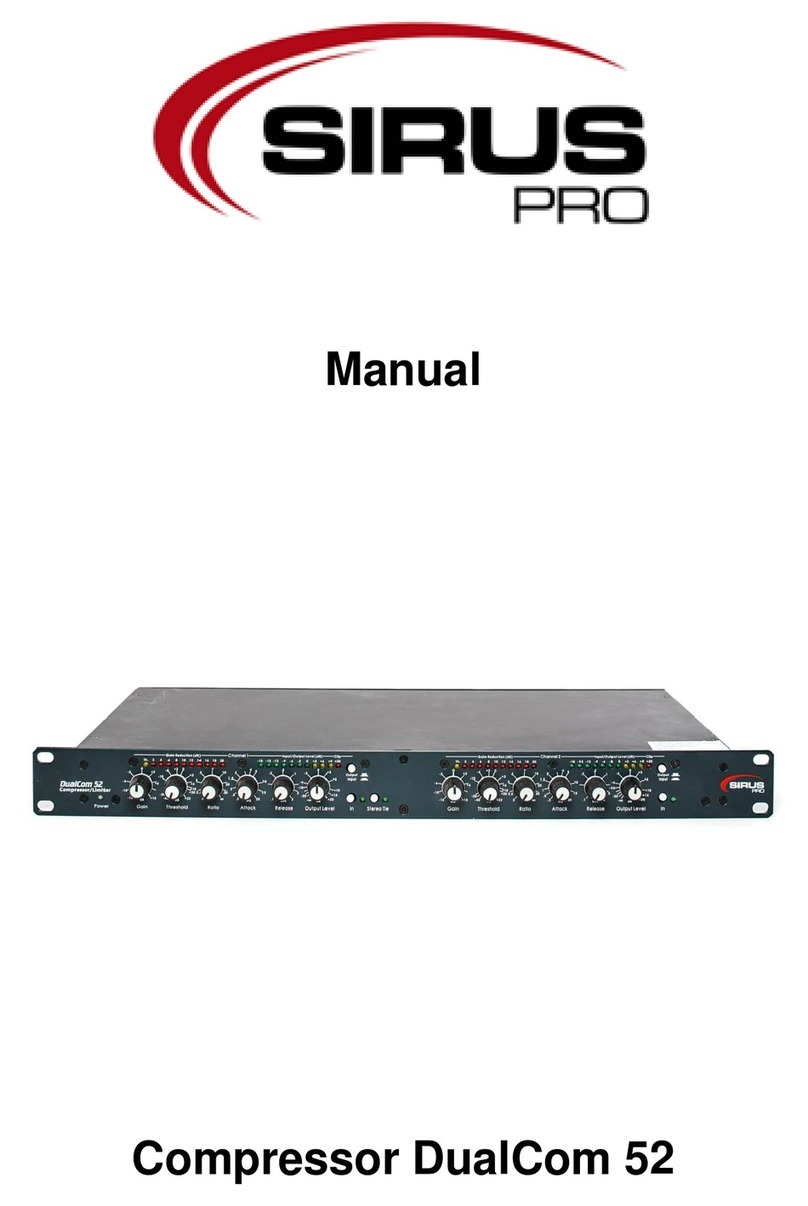
Sirus
Sirus DualCom 52 manual
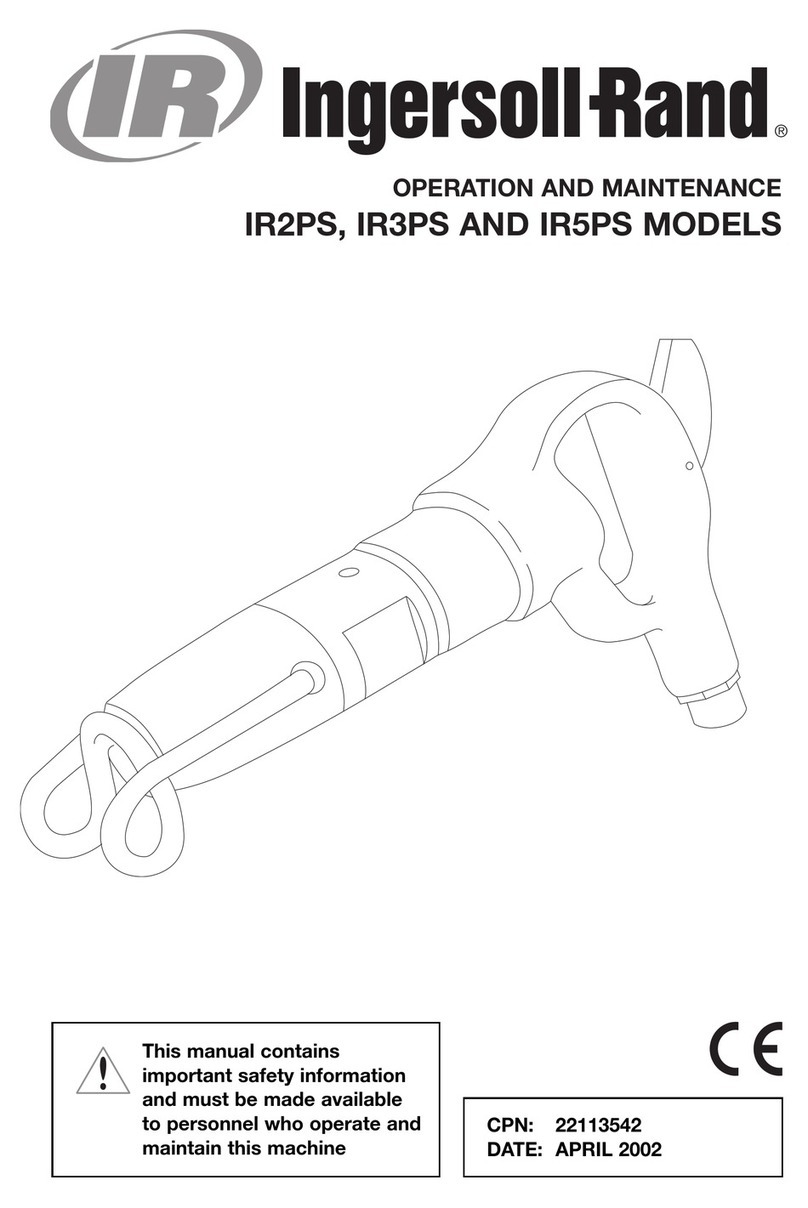
Ingersoll-Rand
Ingersoll-Rand IR2PS Operation and maintenance
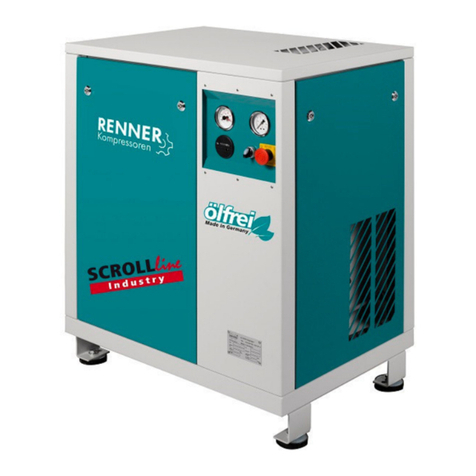
Renner Kompressoren
Renner Kompressoren Scroll Line Series operating manual
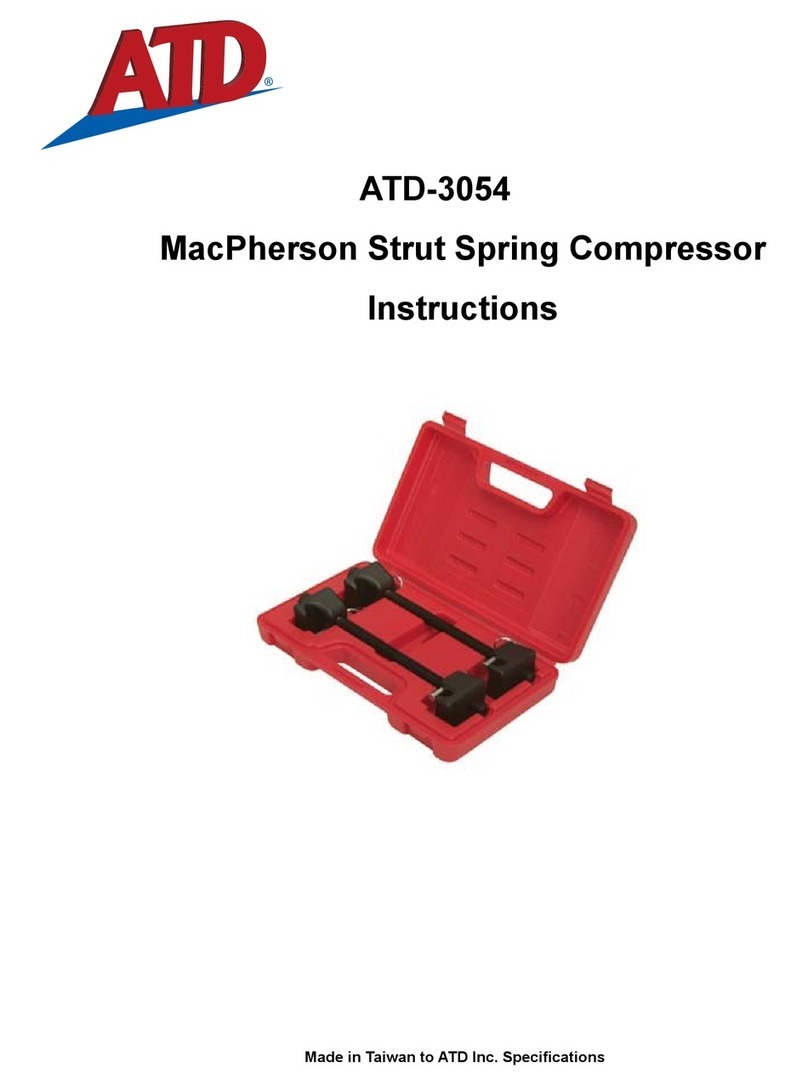
ATD Tools
ATD Tools ATD-3054 instructions
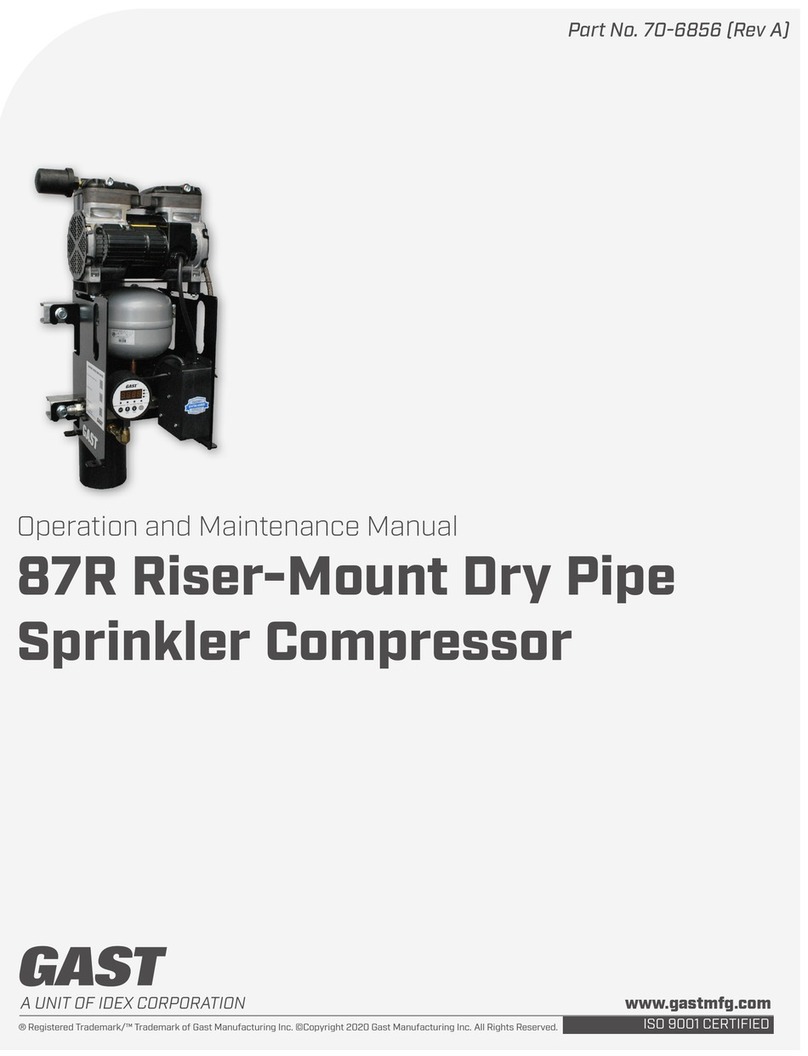
Gast
Gast 87R Operation and maintenance manual
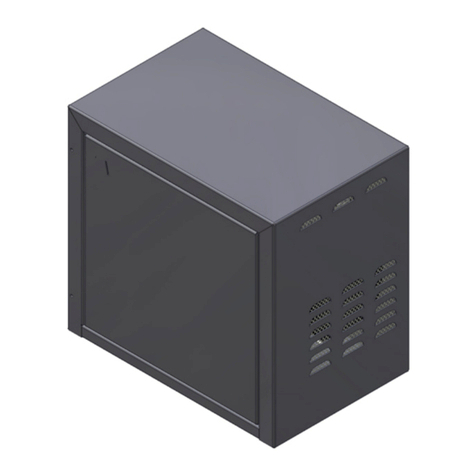
J.E. Adams
J.E. Adams 8670-5WB manual
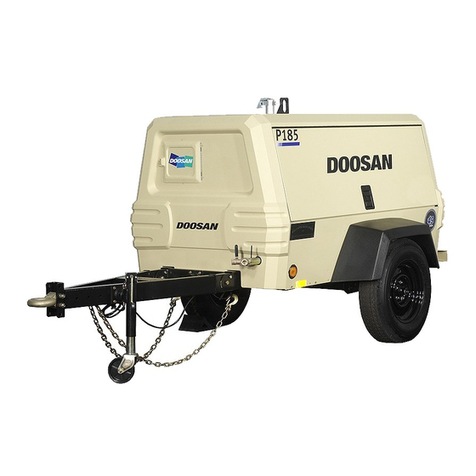
Doosan
Doosan P185WDO-T4F Installation guide, operation and maintenance manual
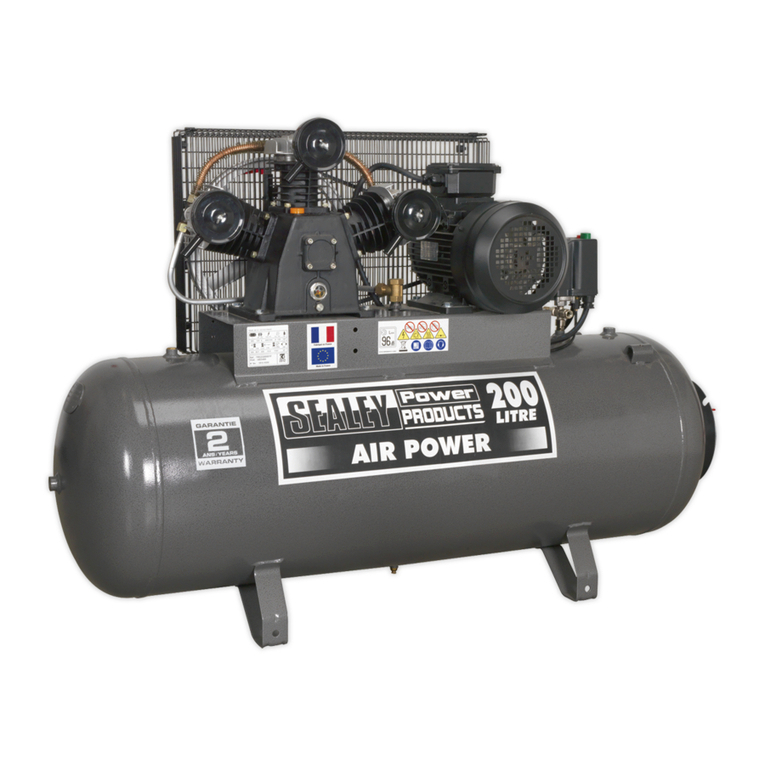
Sealey
Sealey SAC32055B Instructions for use
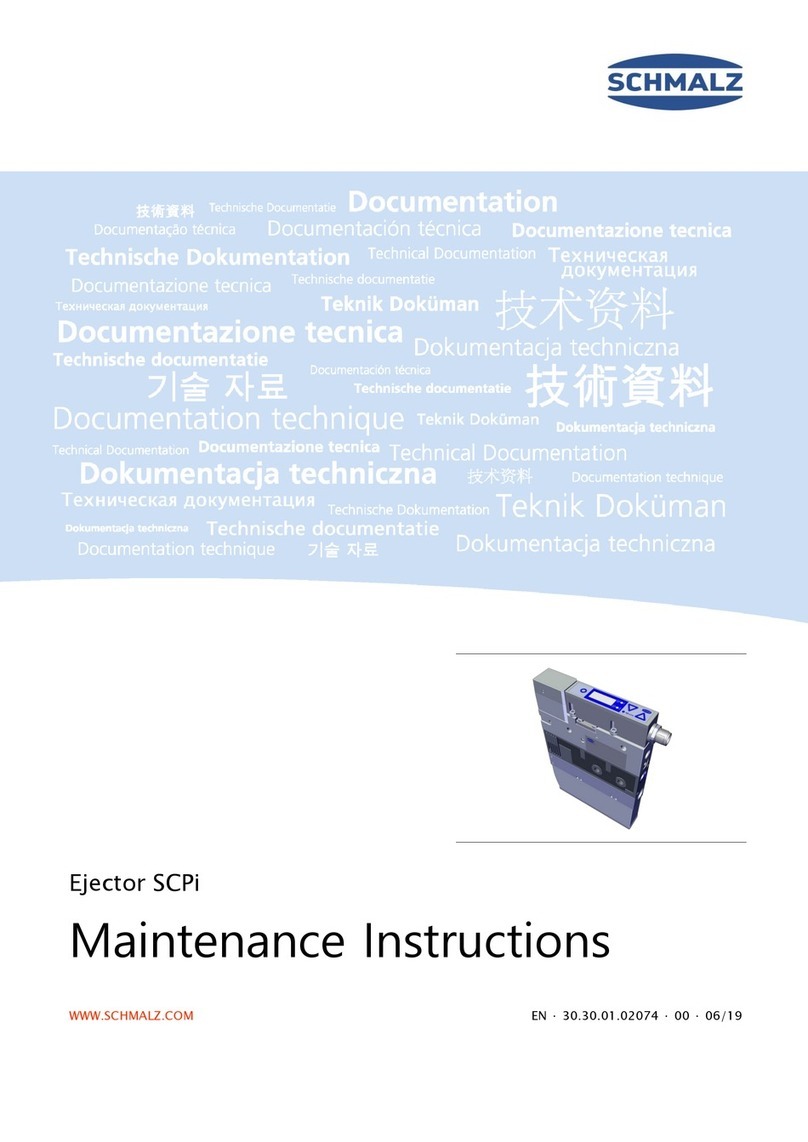
Schmalz
Schmalz SCPi Maintenance instructions
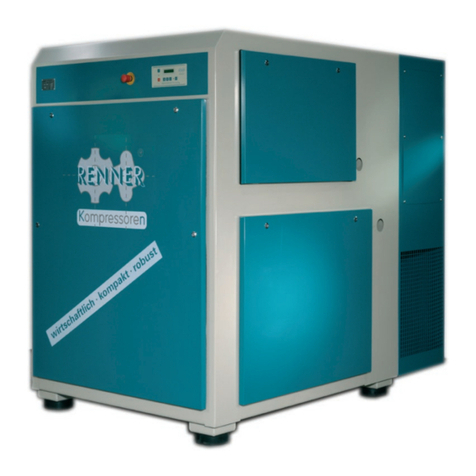
Renner Kompressoren
Renner Kompressoren RS 90/1-110 Operation manual

